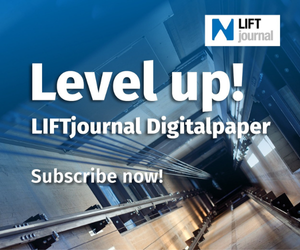Access solutions: thank goodness for radio
Doors as well as locks are among the things we use every day. Even if they seem at first glance to many to be unspectacular and in part inconspicuous, they often have an important function:
Separating the public from private – and thereby inside and outside. The more people use a door, the greater the demands usually on an access system, which in part is far more than just a lock and bolt. Under the surface, it embodies in many cases sophisticated, highly advanced technologies, which in the best case guarantee maximum security and are in addition convenient to use and install.
Electronic access solutions endow an access point with even more flexibility and can in general be divided into two categories: online and offline systems. The former are permanently connected to a network. They are managed by administrators who assign authorisations from a central computer. Other advantages: all status updates can be verified and adjusted in real time. The disadvantage is the installation which often involves elaborate wiring.
Online or offline= Both!
By contrast, offline systems are much easier and cheaper to retrofit. The access data is stored on digital components or the identification media. This guarantees high flexibility and investment security. However, granting the authorisations involves far more effort. Or in other words "sneakernet": administration of the access information and data-carriers has to be accomplished on foot and set up individually for each access point.
Radio technology, which is growing increasingly popular in practice and works with RFID, combines the best of both worlds. For example, those responsible can program and control all identification devices and equipment of the system from a computer. The classic key also loses its essential importance: access can be granted by a chip, key fob or card. Moreover, programming of access media from central or decentralised locations can be carried out conveniently when using electronic access control systems.
The installation effort and costs correspond to those of an offline system, the convenience for users and administration to that of an online system. Extensive drilling and complicated networking are unnecessary, since radio manages without additional wiring, which above all in existing buildings can result in savings in the mid-five figure range.
Goodbye to data storage
eAccess from Glutz AG is exemplary for the advantages of radio, "Programming of fittings, cylinders and readers occurs quite simply via transmitter stick using your own computer. The corresponding repeaters pass on this data in bigger buildings," explained Patrick Zingg, head of marketing at Glutz AG. All Glutz eAccess components are technically fully-developed so that expansion is possible at any time.
Laying new cables is very seldom necessary, for example in the case of new motor locks. The firmware and as a result the licences are free. Administrators can manage up to 500,000 doors and users. Large office complexes with several tenants can be connected without any problem, since the solution can support multiple clients. Every tenant only has access to its own doors and authorizations.
Practical example: 1,000 employees, new lock for the canteen, 1,000 people have to hold their transponders to the master reader to get the new authorisation written to them. Alternatively, the new authorisation is issued to the fitting per transmitter stick, the 1,000 employees do not have to do anything. This applies both to outside doors with security fitting as well as to inside doors with organisation fitting.
www.glutz.com






















Write a comment